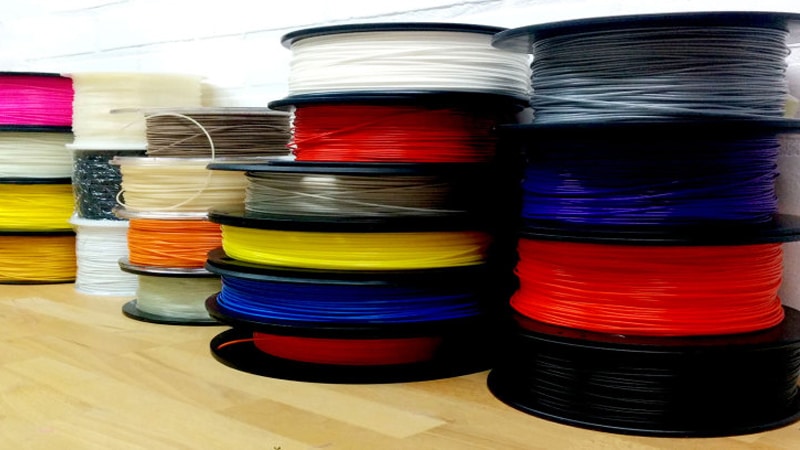3D printing can be done with almost 170 different types of materials but most people choose to 3D print their models in PLA (Poly Lactic Acid) because it is one of the most eco friendly bio plastic available in the market today. PLA is 100% recyclable, bio-degradable, bio-compatible and also very strong as compared to other materials. For the above reasons it is becoming the most popular and widely accepted material for printing.
Polylactic acid is extracted from Lactic acid, (i.e. from renewable raw materials) which is a renewable resource and is used as a natural substitute for petroleum-based plastic and polyster products.
BIODEGRADATION
PLA starts melting on its own after a certain period of time and also melts at about 180°C. PLA can be made to degrade quickly or last for years as required. This creates smaller polymer chains. The result of this breakdown is lactic acid, which is a nutrient that occurs naturally and is also found in milk. As mentioned earlier, Lactic acid is completely bio-degradable and it is not harmful for the local wildlife or water supplies. Since lactic acid breaks down in the environment, this break down produces carbon dioxide, water and stable organic matter. This combination of elements is used to form humus or top soil.
PROBLEMS
Since PLA can distort at a relatively low temperature of 180°C and at 50% humidity; the transportation of these materials are usually very difficult as a slight fluctuation in the temperature could damage the product. These above issue have restricted the use of PLA to non critical, disposable products like napkins and paper plates.
USES
Due to the harmless nature of PLA, it can tap a wide variety of sectors. The best usage of PLA can be seen in the medical industry. PLA bio-degrades naturally over time into something that is harmless and non toxic so it is widely accepted in the healthcare industry; for the production of sutures and stents. It shows a great scope in the pharmaceutical delivery systems as well. Apart from all this, it is used in disposable garments, trays, and as filler in upholstery, pillows, and diapers due to its environmentally friendly chemical profile.
PLA has very good optical properties i.e. in terms of transparency and gloss. It also has good fat, oil and flavor barrier. It is a breathable material so it is used in the packaging for ready to eat vegetables. Since it has good twist retention, it is widely used in the sweet industry. The use of PLA has helped in conserving fossil fuel resources such as oil. For example in Europe, up to 1.5 milliom tons of polyster per year could be replaced by bioplastics in the next 10years. That would be roughly 5% of the European market for plastic packaging. After a lot of research the heat tolerance capacity of PLA has been increased, so now PLA packaging has expanded remarkably. They are now being used in a number of hot food and beverage containers and packaging applications.
The need to protect our environment from unnecessary pollution and to use a sustainable resource to fulfill our needs is important and necessary. In this scenario, PLA is the answer to all such queries.
